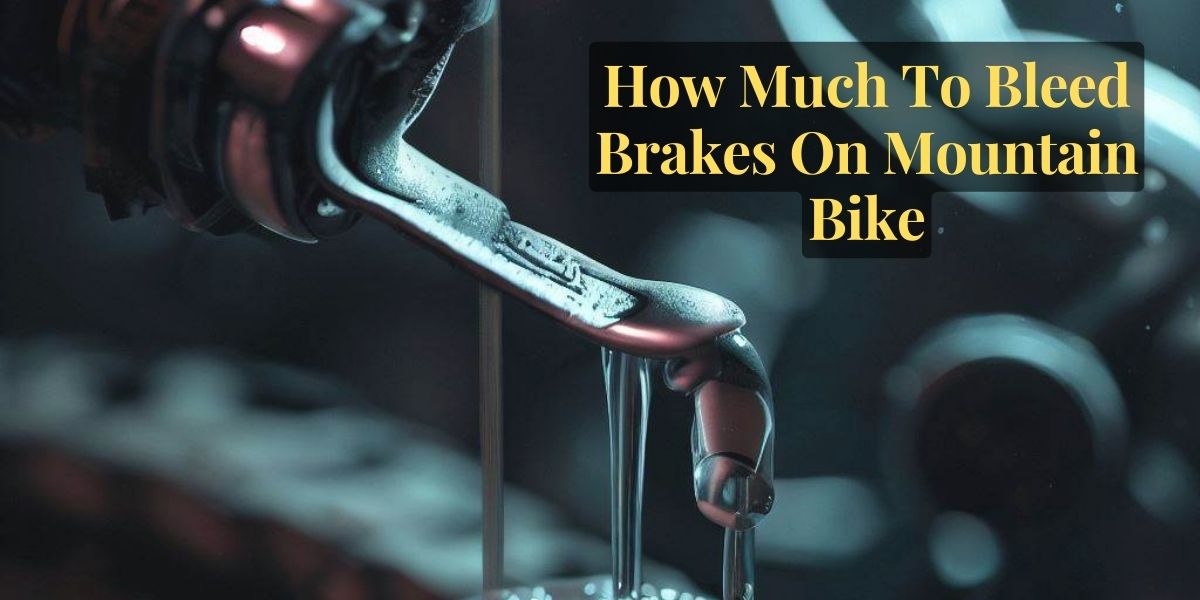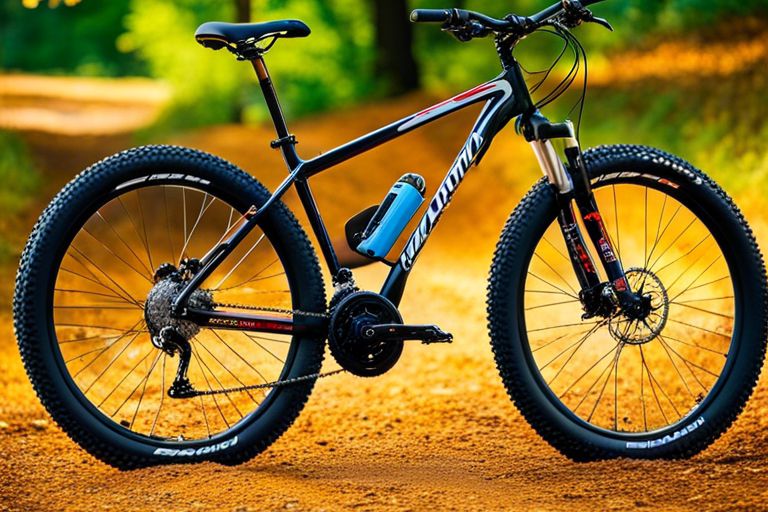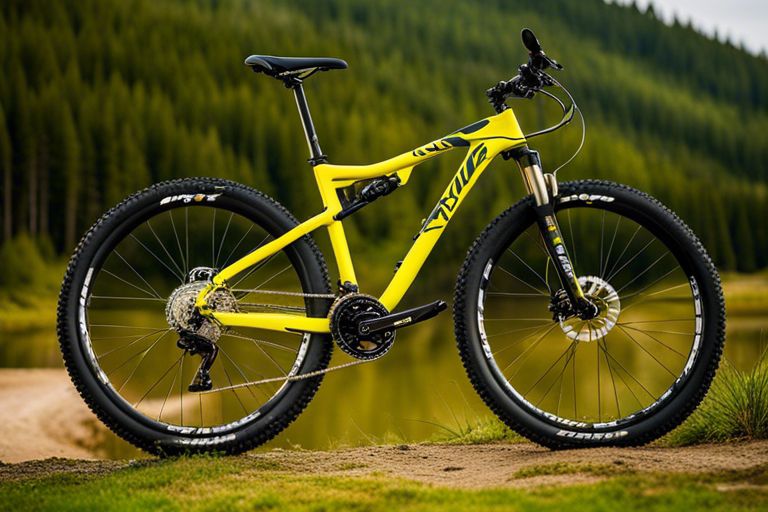You’ve heard the saying, ‘If it ain’t broke, don’t fix it.’ But what about when something does break? When you’re out on the trails with your trusty mountain bike, and your brakes fail, you’ll do whatever it takes to get them up and running again.
But what if the only brake fluid you have on hand is from your car? Can you use car brake fluid on a mountain bike? Before we dive into the answer, let’s look at the differences between car and mountain bike brake systems.
While both systems use hydraulic fluid to transfer force from the brake lever to the brake caliper, the similarities end there. Car brake systems are designed for much heavier vehicles and require a higher boiling point fluid to withstand the heat generated during braking.
On the other hand, mountain bike brake systems are much lighter and require a lower boiling point fluid. Knowing these differences is crucial when making informed decisions about your bike’s maintenance and repairs.
So, let’s explore the potential risks and alternative solutions to using car brake fluid in your mountain bike.
Table of contents
Contents
- 1 Understanding the Differences Between Car and Mountain Bike Brake Systems
- 2 Potential Risks of Using Car Brake Fluid on a Mountain Bike
- 3 Alternative Solutions for Emergencies on the Trail
- 4 How to Properly Maintain Your Mountain Bike Brakes?
- 5 Making Informed Decisions for Your Mountain Bike Brakes
- 5.1 Frequently Asked Questions
- 5.2 Is it safe to mix different types of brake fluids in a mountain bike?
- 5.3 Can use car brake fluid damage the brake pads or rotors on a mountain bike?
- 5.4 How long does brake fluid last in a mountain bike before needing to be replaced?
- 5.5 Can I use car brake fluid to void the warranty on my mountain bike?
- 5.6 Are there any specific brands of brake fluid that are recommended for use in mountain bikes?
- 6 Conclusion 💭
Understanding the Differences Between Car and Mountain Bike Brake Systems
If you’re a mountain biker, it’s essential to understand the unique differences between your braking system and that of a car. One of the most significant differences is the type of brake system used. While cars generally use hydraulic brakes, mountain bikes can have either hydraulic or mechanical brakes.
Hydraulic systems use brake fluid to transfer pressure from the brake lever to the brake pads, while mechanical systems use a cable to do the same thing. Choosing the right brake system is crucial for optimal performance on the trail.
Hydraulic brakes are generally more robust and require less maintenance than mechanical brakes. However, they can be more expensive and may require specialized tools and knowledge to repair.
Mechanical brakes, on the other hand, are typically less expensive and easier to repair but may provide less stopping power than hydraulic brakes.
Understanding brake fluid composition is also essential, as using the wrong fluid type can damage your brake system. In short, it’s important to research and choose the brake system that best fits your riding style and needs.
See also: When To Replace Mountain Bike Brake Pads?
Potential Risks of Using Car Brake Fluid on a Mountain Bike
Applying automotive brake fluid to a mountain bike system may pose considerable hazards. While it may seem like an easy solution to use car brake fluid in your mountain bike, the differences between the two brake systems are significant.
Car brake fluid is designed to work in a hydraulic system with much higher pressure and temperatures than a mountain bike’s brake system. Using car brake fluid in a mountain bike could cause chemical reactions that could damage the seals and rubber components of the brake system.
This could lead to a loss of braking power and a dangerous situation for the rider. To ensure your safety, it’s essential to follow safety precautions and only use brake fluid specifically designed for mountain bikes.
Don’t take unnecessary risks regarding your brakes – always choose the appropriate brake fluid for your bike’s brake system.
Alternative Solutions for Emergencies on the Trail
Looking for alternative options when faced with an emergency on the trail can be a worthwhile pursuit, as many solutions may surprise you.
While it’s not recommended to use car brake fluid in your mountain bike, there are other trailside fixes that you can do to get you back on the trail.
Here are some alternative solutions that you should consider:
- Bring an emergency kit with essential tools such as a spare tube, tire levers, a multi-tool, and a pump. These tools can help you fix common problems such as a flat tire, a broken chain, or a loose bolt.
- Learn how to fix your bike before you hit the trail. You don’t have to be an expert mechanic, but knowing how to do basic repairs can save you time and money. You can find tutorials online or attend a bike maintenance class.
- Ask for help. If you can’t fix your bike alone, don’t hesitate to ask other riders for assistance. Most mountain bikers are friendly and willing to help, especially if you’re in a remote area.
By being prepared and knowledgeable about trailside fixes, you can avoid using car brake fluid in your mountain bike and enjoy a safer and more enjoyable ride.
How to Properly Maintain Your Mountain Bike Brakes?
Maintaining your mountain bike brakes is crucial for a safe and smooth ride through the trails. One of the most important aspects of brake maintenance is ensuring that your brake pads are in good condition.
Over time, brake pads wear down and become less effective. You can check the condition of your brake pads by inspecting them regularly and replacing them when necessary.
It’s also important to keep your brake pads clean, as dirt and debris can cause them to wear down faster. Another important aspect of brake maintenance is caring for your brake rotor. The rotor is the metal disc that the brake pads press against to slow down or stop your bike.
To keep your rotor in good condition, avoid riding through water or mud, as these can cause rust and corrosion.
If you notice any signs of damage or warping on your rotor, it’s important to replace it right away. By properly maintaining your brake pads and rotor, you can ensure that your mountain bike brakes are in top condition and ready to tackle any trail.
See also: How To Adjust Mountain Bike Brakes?
Making Informed Decisions for Your Mountain Bike Brakes
By staying informed about the proper maintenance and care of your mountain bike brakes, you can make informed decisions to ensure a safe and enjoyable ride on any terrain.
When it comes to choosing the right brake fluid for your mountain bike, there are several factors to consider. The climate and terrain you’ll be riding on are important factors to keep in mind.
For example, if you’re going to be riding in wet or muddy conditions, you may want to choose a brake fluid that’s specifically formulated to work well in those conditions.
It’s also important to consult with a professional before making any modifications to your bike’s brake system. They can provide valuable insight into which brake fluid is best for your specific bike and riding style. Making the wrong choice could affect not only your bike’s performance but also your safety.
By taking the time to research and consult with a professional, you can make informed decisions that’ll keep you safe and allow you to enjoy the thrill of mountain biking.
Frequently Asked Questions
Is it safe to mix different types of brake fluids in a mountain bike?
When it comes to brake fluids in mountain bikes, compatibility concerns are a top priority. Mixing different types of brake fluids can lead to serious safety issues, such as reduced braking power or even brake failure. It’s important to stick to the manufacturer’s recommended brake fluid and avoid mixing different types.
If you’re unsure about which brake fluid to use, consult with a professional bike mechanic. While it may be tempting to use car brake fluid as an alternative option, it’s not recommended as it can cause damage to the bike’s braking system.
Stick to the recommended brake fluid and avoid any potential safety hazards.
Can use car brake fluid damage the brake pads or rotors on a mountain bike?
When it comes to brake fluid for your mountain bike, compatibility concerns are crucial. Using car brake fluid may seem like a practical solution, but it can actually lead to serious damage to your brake pads and rotors. That’s because car brake fluid contains different additives than what’s used in bike brake fluids.
So, what are the alternatives to car brake fluid? Stick to using only bike brake fluids that are specifically designed for your mountain bike. This will keep your brakes functioning properly and help you avoid costly repairs down the road.
Don’t take any chances with your brakes – stick to the right products and enjoy a safer, more enjoyable ride.
How long does brake fluid last in a mountain bike before needing to be replaced?
Ah, brake fluid. The unsung hero of smooth and safe braking on your mountain bike. But let’s be real, when was the last time you even thought about the brake fluid in your bike? It’s like that old saying, ‘Out of sight, out of mind.’
But listen up because you don’t want to be caught with contaminated brake fluid when you’re flying down a steep descent. Signs of brake fluid contamination include a murky or discolored appearance, a foul odor, or a spongy feel when you squeeze the brake lever.
And when it’s time to replace your brake fluid, don’t just pour it down the drain! Brake fluid disposal is a serious matter, and you should always follow proper procedures to protect the environment.
So, how long does brake fluid last in a mountain bike before needing to be replaced? Well, it really depends on how often you ride and the conditions you ride in. Generally, it’s a good idea to replace your brake fluid at least once a year or more frequently if you notice any signs of contamination.
Remember, your brakes are what keep you safe on the trails, so take care of them, and they’ll take care of you.
Can I use car brake fluid to void the warranty on my mountain bike?
Using car brake fluid in your mountain bike can have potential consequences for your warranty and safety. It’s important to consider the implications before making any changes to your bike’s brake system.
If you use car brake fluid in your mountain bike, it could void the warranty on your bike. Additionally, car brake fluid is designed for a different type of braking system than what is found on a mountain bike, so there may be safety concerns to consider.
Before making any changes to your bike’s brake system, it’s always best to consult with a professional to ensure that you’re making the right choice for your bike and your safety.
Are there any specific brands of brake fluid that are recommended for use in mountain bikes?
When it comes to selecting the right brake fluid for your mountain bike, it’s important to choose a brand that’s recommended by the manufacturer. Some of the top brands include Shimano, Magura, and SRAM.
In terms of choosing between DOT 4 and DOT 5.1 brake fluids, there are a few things to consider. DOT 4 offers better performance in high-temperature conditions, while DOT 5.1 has a higher boiling point and is more resistant to moisture.
Ultimately, the choice between the two will depend on your individual needs and preferences. Regardless of which brand or type you choose, it’s essential to maintain your brake system regularly to ensure optimal performance and safety on the trails.
Conclusion 💭
Congratulations! You’ve made it to the end of the article, and you’ve gained valuable insights about using car brake fluid in your mountain bike.
As a knowledgeable and detail-oriented rider, you now understand the fundamental differences between car and mountain bike brake systems and the potential risks of using car brake fluid in your bike.
Remember, your mountain bike is a finely-tuned machine that requires specific care and maintenance. You wouldn’t use a hammer to fix a delicate watch, and you shouldn’t use car brake fluid to fix your mountain bike brakes.
Instead, be prepared for emergencies on the trail by carrying alternative solutions like DOT or mineral oil. Make sure to maintain your brakes for optimal performance regularly.
In conclusion, by making informed decisions about your mountain bike brakes, you’ll not only ensure a safe and enjoyable ride, but you’ll also be able to visualize yourself confidently tackling the toughest terrains with ease.
So go ahead, hit the trails with confidence, and always remember to prioritize safety and maintenance!






